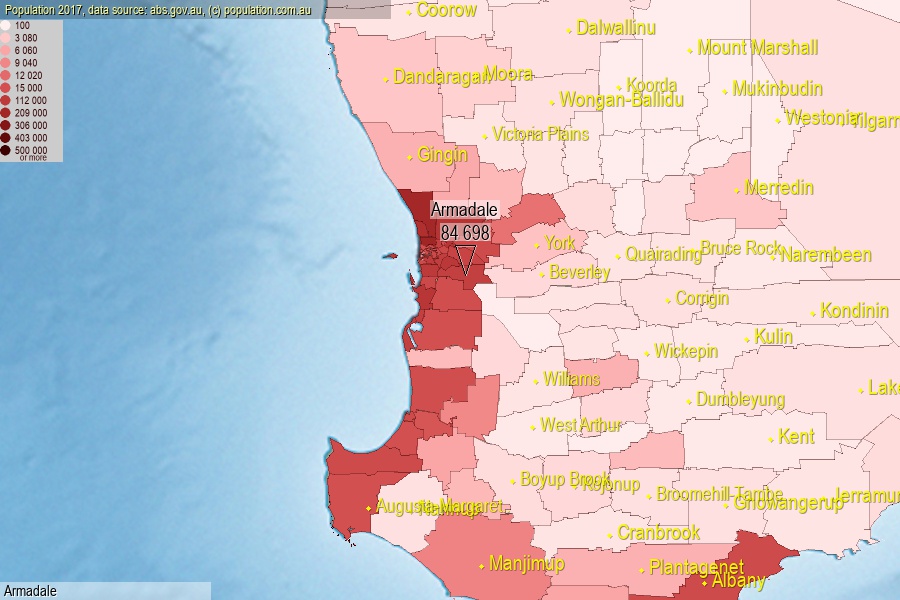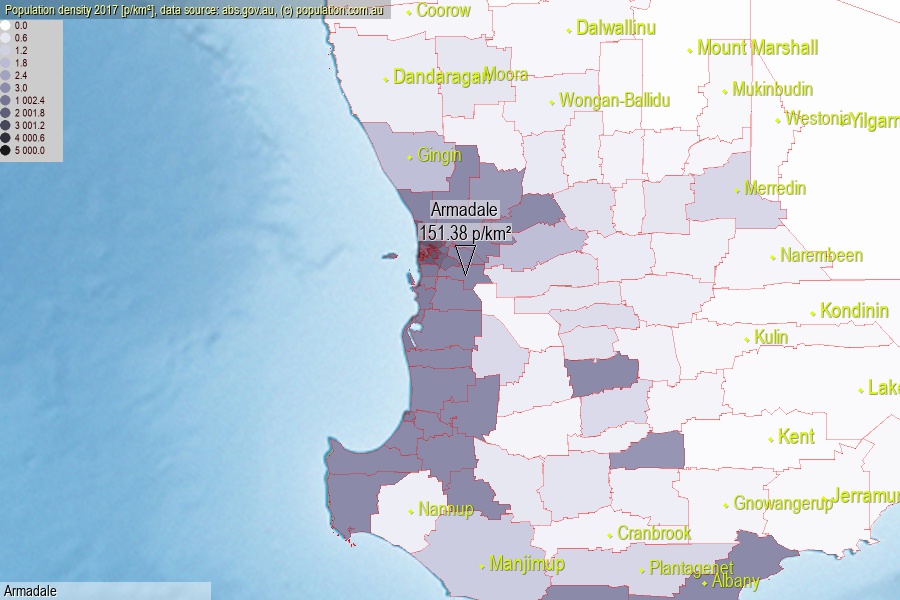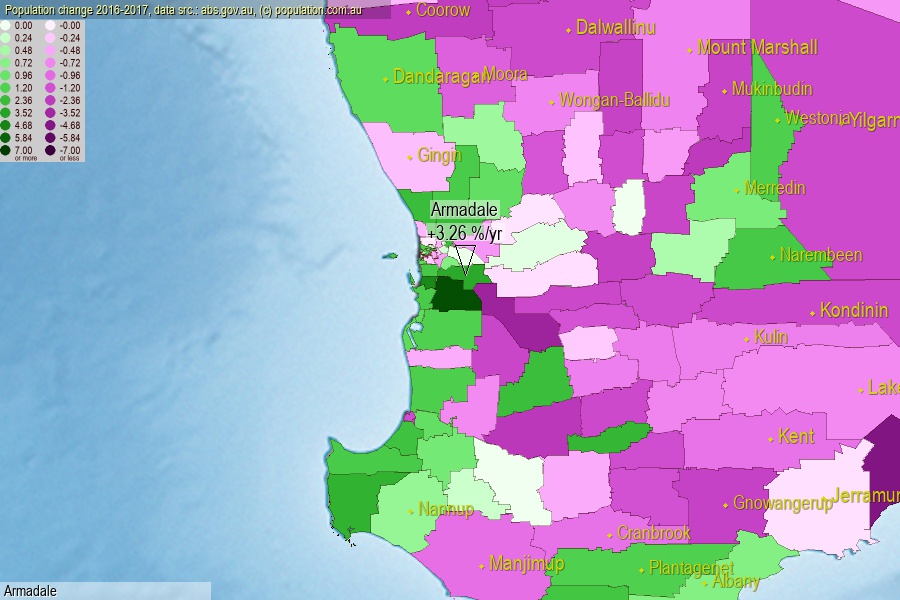 population.com.au
population.com.auLast official estimated population of Armadale City (as Local Government Area) was 84 698 people (on 2017-06-30)[2]. This was 0.34% of total Australian population and 3.268% of WA population. Area of Armadale is 559.50 km², in this year population density was 151.38 p/km² . If population growth rate would be same as in period 2016-2017 (+3.26%/yr), Armadale population in 2025 would be 109 511. [0]



Click to enlarge. Armadale is located in the center of the images.
Population [people], population density [p./km²] and population change [%/year] [2]
[1996-2001] +0.14 %/Y
[2001-2002] -0.36 %/Y
[2002-2003] -0.30 %/Y
[2003-2004] -0.02 %/Y
[2004-2005] -0.47 %/Y
[2005-2006] +0.97 %/Y
[2006-2007] +2.75 %/Y
[2007-2008] +3.86 %/Y
[2008-2009] +4.84 %/Y
[2009-2010] +5.73 %/Y
[2010-2011] +5.72 %/Y
[2011-2012] +5.67 %/Y
[2012-2013] +5.15 %/Y
[2013-2014] +3.99 %/Y
[2014-2015] +4.35 %/Y
[2015-2016] +4.02 %/Y
[2016-2017] +3.26 %/Y
[0] Calculated with linear interpolation from officially estimated population
[1] Read more about LGA and Australian Statistical Geography Standard (ASGS) on abs.gov.au
[2] Population data from Australian Bureau of Statistics (Population and density: 2017; change: 2016-2017)
[3] Digital Boundaries: Australian Statistical Geography Standard (ASGS) 2016.